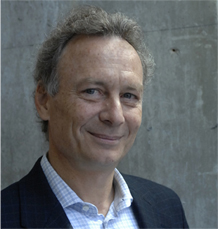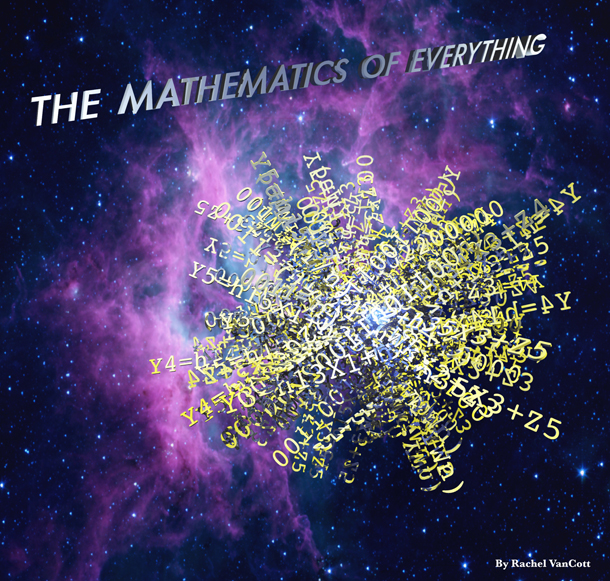John Tsitsiklis' students are getting a degree in "the mathematics of everything," according to their advisor. By the time John signs off on a graduate thesis, the LIDS Associate Director and professor expects his students to be experts on more than a thesis topic. He wants them to be adept problem solvers—capable of coming up with creative, analytical solutions for all sorts of situations.
John has been at MIT, first as a student and then as a professor, for more than three decades. In the years since he first traveled from Thessaloniki, Greece, to LIDS and MIT, he's seen the lab's scope broaden. When he first joined the lab, LIDS researchers focused on applications in areas such as manufacturing, transportation, and aerospace. Now the scholars tackle a broader set of problems that go as far as medicine, neuroscience, and systems biology. Advances in communication technology have increased and accelerated idea sharing across the lab in ways that are both exciting and exacting—John wistfully recalls the time before email interruptions and updates, back when he could spend hours alone in his office working on papers and problems.
But in spite of the interdisciplinary and technical changes that have reshaped the research world, the heart of LIDS is unchanged. Work at LIDS is and has always been about using analytical techniques to solve all kinds of problems, said John, and an amazing variety of problems can benefit from a mathematical approach. For example, imagine a woman who wants to eventually get married. How does she pick the best possible partner? She meets potential mates one after another and has the chance to have a relationship with each. Once she turns down a candidate, she can't go back. Some of the suitors would be a better match than the others, but she doesn't know if they will approach her and when. So how can she decide? That realistic (albeit much simplified) dilemma is a classical type of problem in applied probability, known as an "optimal stopping" problem. The woman in the example is trying to solve a complex, time-dependent problem, with limited information. (One solution to the problem, by the way, is for the woman to wait until she's seen a modest fraction of the suitors she expects to meet in her life. At that point, she'll have a realistic picture of what an ideal mate would be like, and she can marry the next person that meets or exceeds her criteria for suitability.) "The general thrust of my research is about making decisions when you're faced with uncertainty," said John. Industry is full of problems like the challenge of choosing a mate—people are constantly asked to make decisions with limited information. An investor has a certain amount of financial knowledge about his options and a set amount of money to invest. Similar situations are common, from engineering to marketing.
Optimal stopping problems are only one example where people have to make a decision in an uncertain environment. Here's another scenario that John looked at with one of his students: Suppose you're a doctor treating a lung cancer patient, and you want to treat the tumor with radiation therapy. You need to damage the tumor as much as you can, and do as little damage as possible to the healthy tissue. In the absence of other factors, you could treat this as a (relatively) simple optimization problem, but there's an extra element of uncertainty. The patient will be breathing during the treatment, and that means that the tumor might be moving. Furthermore, you can't safely assume that the patient will keep breathing in exactly the same way over the course of treatment. How do you adjust the radiation beams to account for the uncertainty? (One answer to this problem involves creating a mathematical model of the uncertainty and working that model into the optimization problem.)
"No matter what the problem is, [my students] should be able to look at it and come up with good models, think about the issues, simplify, and contribute," said John, "In our lab we're not really teaching application domain specific skills. But we aim at the high order skill of being able to (learn) about any problem and contribute useful insights." John is more concerned about the general process of problem formulation and solution than with any particular application, so the professor gives his students the freedom to set their own direction. Picking out important problems to work on is a key part of graduate education, he said. "Ideally we want the student to come up with the topic and formulate the problem," John said. "The biggest challenge in research is to come up with a good and interesting question... one that is neither trivial nor impossible." The task of finding an approachable and meaningful problem can be agonizing, John admits, but all of his students eventually settle on a topic. One of his students is working on the radiation therapy problem described above. Two others are investigating the best ways for network servers to allocate resources during heavy use. Another is creating a methodology for setting the prices of comparable products in a retail environment. Other students are analyzing various problems of distributed decision making. John currently has ten graduate students in various stages of study. Some are just starting to define the problems they'd like to study, others are working through problems, and one is wrapping up his thesis. After years of one-on-one meetings and study, all of John's students will graduate and head out to seek new challenges, and the professor will shift his attention to the next group of young minds.
In 2009, John was honored with the "Best Advisor" award from the MIT chapter of the Association for Computing Machinery/Institute of Electrical and Electronics Engineers. Some of his former students have gone on to teach at universities all over the world, from Singapore, Greece, and Canada to Berkeley, Stanford, and MIT. Others have gone outside academia to start careers in research labs, NGOs, management consulting or investment banking. Wherever his students go, John said, he's proud that they emerge from LIDS with the tools to leave their mark on the world in their own creative ways, capitalizing on their analytical skills and mindset.




